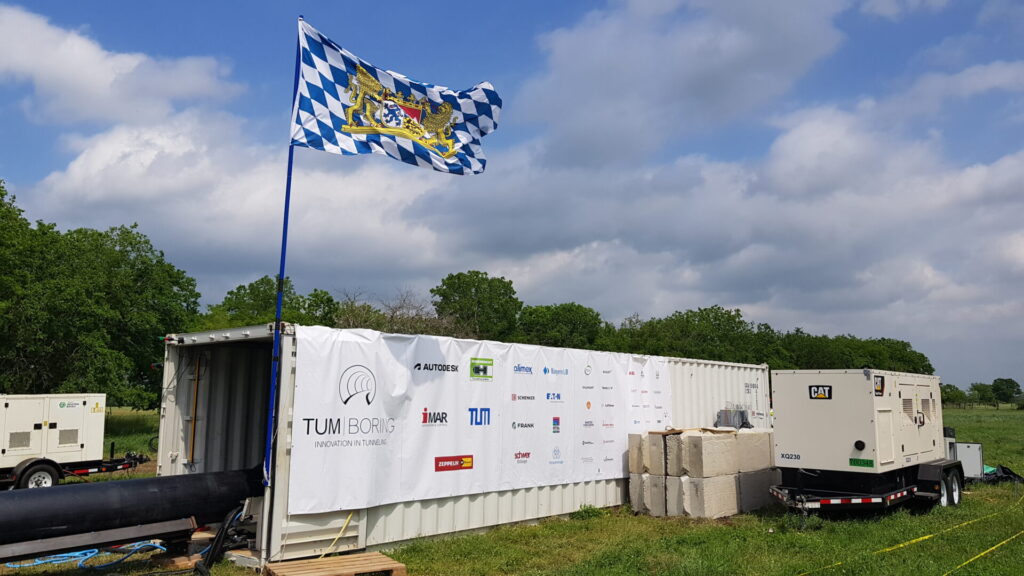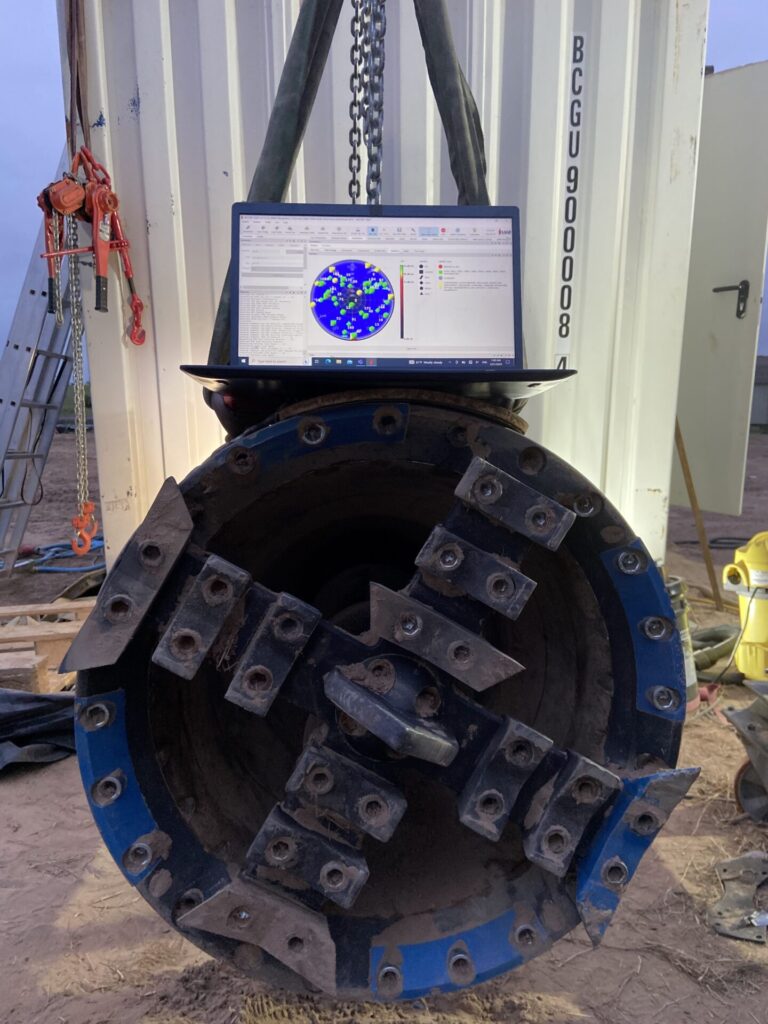
Chronic traffic congestion causes many problems, including excess pollution, untold quantities of wasted time and energy, and negative psychological effects. To alleviate congestion, people can either travel less or build more avenues, either in the air for flying cars that aren’t yet practical, on the ground with more roads, or… underground.
With The Boring Company’s Loop now active in Las Vegas, new tunneling systems are already alleviating city traffic. If tunnels’ potential can be fully realized, they could transform cities by providing safe, low-cost, weatherproof, rapid point-to-point transportation for commuters, travelers, and freight, while drastically reducing traffic congestion. Moving more traffic underground would reduce noise and air pollution, would not despoil limited surface land for roadways, and could even free up former streets to be converted to public areas and green spaces.
However, there’s at least one big roadblock, so to speak: current tunnel boring machines work slower than a snail’s pace, while costing cities huge amounts of money. They can dig only about 20-50 meters a day—less than what some snails can travel in a day. That’s why The Boring Company has sought to harness the innovation of the crowd through its Not-a-Boring Competition. The competition’s goal is to catalyze rapid innovation in tunnel boring speed and asks the hundreds of teams from around the world who have entered: “Can you beat the snail?”
Well, so far one institution has showed the most promise, becoming somewhat of a dynasty in winning Hyperloop and tunneling competitions. And it’s largely made up of passionate and driven students.
Tunneling momentum in Munich
The Technical University of Munich (TUM) has a reputation for technological innovation. Since 2015, two products of its design and engineering crucible have dominated Elon Musk’s tunnel transportation competitions. From 2015 to 2019 the TUM Hyperloop program won all four of Space X’s Hyperloop Pod Competitions, achieving a record 482 km/h speed for its pod in the final competition. While TUM Hyperloop is now focused on completing a full-scale Hyperloop test tube with passenger capsule in 2023, the TUM Boring non-profit organization patronized by the university concentrates on the effort to shape the future of tunneling technology and build the world’s fastest tunnel boring machine (TBM).
With its Overall Winner award at the 2023 Not-a-Boring Competition in Bastrop, Texas on April 1, TUM Boring has now won both Not-a-Boring Competitions—continuing the winning tradition that TUM Hyperloop started. TUM Boring won Best Guidance System and Overall Winner at the 2021 contest in Las Vegas, Nevada, which intended to test teams’ ability to create a working TBM, which are very complex builds.
As challenging as that was, the 2023 competition threw another couple of wrenches in the machine. Unlike in 2021, the 2023 competition measured the teams’ machine setup times, and the boring machines were also required to handle a curved track.
New tunnel-boring challenges

Andrean Tedjojuwono, a mechanical engineer and one of the 30+ student members of TUM Boring in 2023, says the competition this year was more complicated and closer to real-life conditions. “Teams were challenged to create a new TBM concept to bore a curved tunnel that can be easily transported to the project site and quickly installed,” he says. “As in the real world, the setup time before boring is crucial because it’s a huge source of time loss, leading to substantial financial costs.”
Requiring that the teams bore a curved tunnel also mimics true-to-life scenarios, which seldom call for a perfectly straight tunnel. The TBMs also needed to steer accurately both vertically and horizontally. Tedjojuwono was also part of the team in 2021, and he points out that the geological conditions of the ground in 2021 and 2023 radically differed. In 2021, the Las Vegas geology was sandy with some hard caliche mineral rocks embedded, while the geology outside of Austin, Texas in 2023 included a lot of clay with thick grass and grassroots in the upper layer.
“This presented us with the ultimate challenge of introducing newer machine systems to be able to bore tunnels in both geological conditions,” Tedjojuwono says. “Imagine a race car that has to compete on both F1-style asphalt and a World Rally Championship (WRC),” where cars drive on real-world roads, often unpaved.
Going the distance with Fusion 360

TUM Boring’s TBM is a massive machine—40 feet long and 22 tons—transported in a cargo container, and it includes many systems all working together: cutterhead, steering, laser guidance system, control, propulsion, material removal, power, and a pipe-segment revolver. Because of the new requirements of the 2023 Not-a-Boring Competition, Tedjojuwono says many of the systems needed to be reengineered, like the material removal, cable management, and tunnel structure systems. “Thanks to Fusion 360, we could pull it off,” he says.
For years, the TUM competition teams have relied on Autodesk Fusion 360, which allows a team of dozens of students to collaborate remotely with cloud-based data syncing. TUM Boring uses Fusion 360 to integrate all of its project components, which makes its TBM one of the most complex Fusion 360 setups in existence.
In the 2023 competition, TUM Boring’s machine tunneled almost 12 meters, and Tedjojuwono says it was the only team in the contest that was able to dig a tunnel because of the TBM’s reliability. He attributes that reliability in large part to Fusion 360’s simulation capabilities, which allowed the team to test every machine part, spot potential mechanical failures, and make last-minute modifications to eliminate them.
“Fusion 360 has an excellent user interface and puts an increased focus on teamwork,” he says. “Our engineers can not only work on their own parts, but also are able to easily see the general design overview of the machine. This way, we can easily reassign engineers to work on designing high-priority machine parts without trouble.”
TUM Boring’s partnership with Autodesk also helped the non-profit in procuring some additional support from its long list of industrial partners, says Benedikt Seel, a board member of the team. The Autodesk media team helped TUM Boring with using Fusion 360’s rendering features to create high-definition 3D imagery. “This very much helped us when talking to potential sponsors and external companies,” he says.
The path to not-a-boring career
TUM Boring’s relationships with industrial partners helped not only with its giant TBM undertaking, but they also provided relationship-building opportunities to students on the team, many of whom received job offers before graduating, according to Tedjojuwono. Working with TUM Boring on a large, fully functional project with the potential to impact the future of mobility builds industry-relevant skills and experience.
“I learned a lot of project management skills, communication skills, and other soft skills not included in my major that will very much help me in my future,” Tedjojuwono says. “Machines of this financial magnitude and engineering complexity are not usually designed by students. I feel very privileged to be able to design highly complex machine parts that require many different engineering disciplines and piece them together into one. If not for this project, I wouldn’t have the chance to do so.”